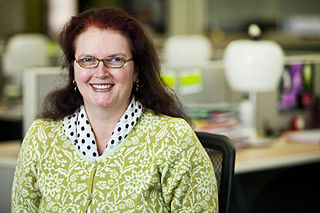
Java is a high-level, class-based, object-oriented programming language that is designed to have as few implementation dependencies as possible. It is a general-purpose programming language intended to let programmers write once, run anywhere (WORA), meaning that compiled Java code can run on all platforms that support Java without the need to recompile. Java applications are typically compiled to bytecode that can run on any Java virtual machine (JVM) regardless of the underlying computer architecture. The syntax of Java is similar to C and C++, but has fewer low-level facilities than either of them. The Java runtime provides dynamic capabilities that are typically not available in traditional compiled languages.

Oracle Corporation is an American multinational computer technology company headquartered in Austin, Texas. In 2020, Oracle was the third-largest software company in the world by revenue and market capitalization. In 2023, the company’s seat in Forbes Global 2000 was 80. The company sells database software and cloud computing. Oracle's core application software is a suite of enterprise software products, such as enterprise resource planning (ERP) software, human capital management (HCM) software, customer relationship management (CRM) software, enterprise performance management (EPM) software, Customer Experience Commerce and supply chain management (SCM) software.

Sun Microsystems, Inc. was an American technology company that sold computers, computer components, software, and information technology services and created the Java programming language, the Solaris operating system, ZFS, the Network File System (NFS), and SPARC microprocessors. Sun contributed significantly to the evolution of several key computing technologies, among them Unix, RISC processors, thin client computing, and virtualized computing. Notable Sun acquisitions include Cray Business Systems Division, Storagetek, and Innotek GmbH, creators of VirtualBox. Sun was founded on February 24, 1982. At its height, the Sun headquarters were in Santa Clara, California, on the former west campus of the Agnews Developmental Center.
A computing platform, digital platform, or software platform is the infrastructure on which software is executed. While the individual components of a computing platform may be obfuscated under layers of abstraction, the summation of the required components comprise the computing platform.
Thinking Machines Corporation was a supercomputer manufacturer and artificial intelligence (AI) company, founded in Waltham, Massachusetts, in 1983 by Sheryl Handler and W. Daniel "Danny" Hillis to turn Hillis's doctoral work at the Massachusetts Institute of Technology (MIT) on massively parallel computing architectures into a commercial product named the Connection Machine. The company moved in 1984 from Waltham to Kendall Square in Cambridge, Massachusetts, close to the MIT AI Lab. Thinking Machines made some of the most powerful supercomputers of the time, and by 1993 the four fastest computers in the world were Connection Machines. The firm filed for bankruptcy in 1994; its hardware and parallel computing software divisions were acquired in time by Sun Microsystems.
The Network Computer was a diskless desktop computer device made by Oracle Corporation from about 1996 to 2000. The devices were designed and manufactured by an alliance, which included Sun Microsystems, IBM, and others. The devices were designed with minimum specifications, based on the Network Computer Reference Profile. The brand was also employed as a marketing term to try to popularize this design of computer within enterprise and among consumers.
Fortress is a discontinued experimental programming language for high-performance computing, created by Sun Microsystems with funding from DARPA's High Productivity Computing Systems project. One of the language designers was Guy L. Steele Jr., whose previous work includes Scheme, Common Lisp, and Java.
A tuple space is an implementation of the associative memory paradigm for parallel/distributed computing. It provides a repository of tuples that can be accessed concurrently. As an illustrative example, consider that there are a group of processors that produce pieces of data and a group of processors that use the data. Producers post their data as tuples in the space, and the consumers then retrieve data from the space that match a certain pattern. This is also known as the blackboard metaphor. Tuple space may be thought as a form of distributed shared memory.

William "Bill" Yeager is an American engineer. He is an inventor of a packet-switched, "Ships in the Night", multiple-protocol router in 1981.

Gregory Michael Papadopoulos is an American engineer, computer scientist, executive, and venture capitalist. He is the creator and lead proponent for Redshift, a theory on whether technology markets are over or under-served by Moore's Law.

Danese Cooper is an American programmer, computer scientist and advocate of open source software.
java.net was a Java technology related community website. It also offered a web-based source code repository for Java projects. It was shut down in April 2017.
A virtual appliance is a pre-configured virtual machine image, ready to run on a hypervisor; virtual appliances are a subset of the broader class of software appliances. Installation of a software appliance on a virtual machine and packaging that into an image creates a virtual appliance. Like software appliances, virtual appliances are intended to eliminate the installation, configuration and maintenance costs associated with running complex stacks of software.
Sun Cloud was an on-demand cloud computing service operated by Sun Microsystems prior to Sun's acquisition by Oracle Corporation. The Sun Cloud Compute Utility provided access to a substantial computing resource over the Internet for US$1 per CPU-hour. It was launched as Sun Grid in March 2006—the same month Amazon Web Services began offering their first IT infrastructure services. It was based on and supported open source technologies such as Solaris 10, Sun Grid Engine, and the Java platform.

Java is a set of computer software and specifications that provides a software platform for developing application software and deploying it in a cross-platform computing environment. Java is used in a wide variety of computing platforms from embedded devices and mobile phones to enterprise servers and supercomputers. Java applets, which are less common than standalone Java applications, were commonly run in secure, sandboxed environments to provide many features of native applications through being embedded in HTML pages.

Azul Systems, Inc. develops runtimes for executing Java-based applications. Azul Systems, founded in March 2002, Azul Systems has headquarters in Sunnyvale, California.

Zembly was a browser-based development environment from Sun Microsystems that enabled social programming of applications for Facebook, Meebo, OpenSocial, iPhone web applications, and other social platforms, as well as web widgets. Users of zembly interacted with one another via zembly's social networking features to engage in co-development of applications for these platforms. It was available from 2008 to 2009.

AppScale is a software company that offers cloud infrastructure software and services to enterprises, government agencies, contractors, and third-party service providers. The company commercially supports one software product, AppScale ATS, a managed hybrid cloud infrastructure software platform that emulates the core AWS APIs. In 2019, the company ended commercial support for its open-source serverless computing platform AppScale GTS, but AppScale GTS source code remains freely available to the open-source community.
CloudBees is an enterprise software delivery company. Sacha Labourey and Francois Dechery co-founded the company in early 2010, and investors include Matrix Partners, Lightspeed Venture Partners, HSBC, Verizon Ventures, Golub Capital, Goldman Sachs, Morgan Stanley, and Bridgepoint Group.
Christopher (Chris) Ferris is a computer scientist, best known for co-leading the Hyperledger Fabric project where he chaired the Technical Steering Committee from 2016 to 2018 and was a member of the Governing Board of the foremost blockchain project of the Linux Foundation. Hyperledger has been one of the fastest-growing open community projects, with over 200 corporate and associate members. Ferris has a history of open-source software contributions to other technologies, including web services and cloud. Ferris is currently an IBM Fellow, and CTO Open Technologies.










